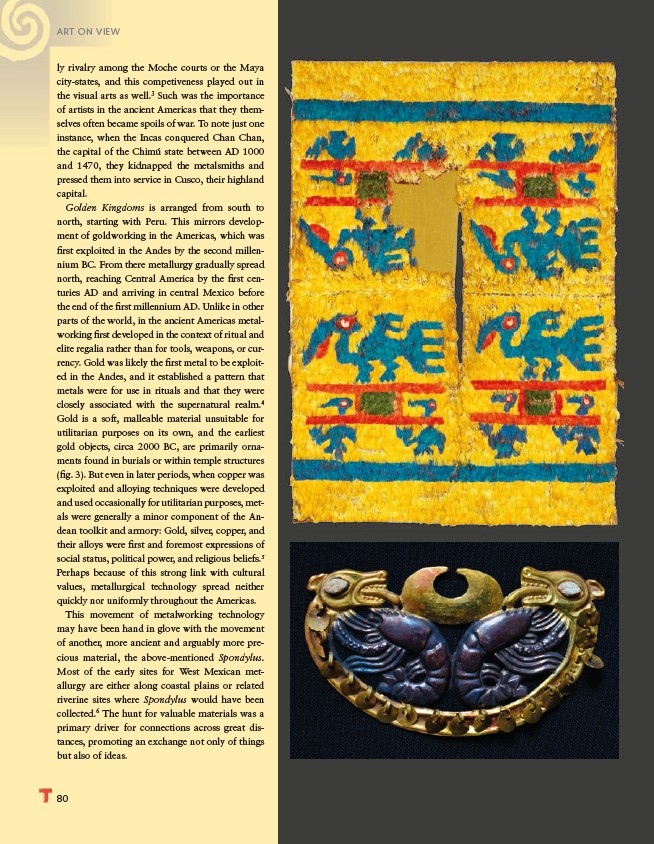
ART ON VIEW
ly rivalry among the Moche courts or the Maya
city-states, and this competiveness played out in
the visual arts as well.3 Such was the importance
of artists in the ancient Americas that they themselves
80
often became spoils of war. To note just one
instance, when the Incas conquered Chan Chan,
the capital of the Chimú state between AD 1000
and 1470, they kidnapped the metalsmiths and
pressed them into service in Cusco, their highland
capital.
Golden Kingdoms is arranged from south to
north, starting with Peru. This mirrors development
of goldworking in the Americas, which was
fi rst exploited in the Andes by the second millennium
BC. From there metallurgy gradually spread
north, reaching Central America by the fi rst centuries
AD and arriving in central Mexico before
the end of the fi rst millennium AD. Unlike in other
parts of the world, in the ancient Americas metalworking
fi rst developed in the context of ritual and
elite regalia rather than for tools, weapons, or currency.
Gold was likely the fi rst metal to be exploited
in the Andes, and it established a pattern that
metals were for use in rituals and that they were
closely associated with the supernatural realm.4
Gold is a soft, malleable material unsuitable for
utilitarian purposes on its own, and the earliest
gold objects, circa 2000 BC, are primarily ornaments
found in burials or within temple structures
(fi g. 3). But even in later periods, when copper was
exploited and alloying techniques were developed
and used occasionally for utilitarian purposes, metals
were generally a minor component of the Andean
toolkit and armory: Gold, silver, copper, and
their alloys were fi rst and foremost expressions of
social status, political power, and religious beliefs.5
Perhaps because of this strong link with cultural
values, metallurgical technology spread neither
quickly nor uniformly throughout the Americas.
This movement of metalworking technology
may have been hand in glove with the movement
of another, more ancient and arguably more precious
material, the above-mentioned Spondylus.
Most of the early sites for West Mexican metallurgy
are either along coastal plains or related
riverine sites where Spondylus would have been
collected.6 The hunt for valuable materials was a
primary driver for connections across great distances,
promoting an exchange not only of things
but also of ideas.